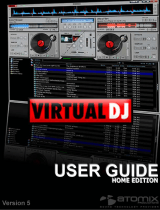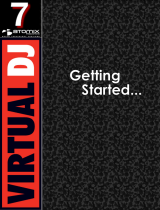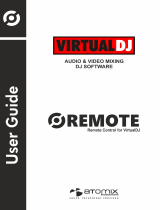
ITALIANO
DEUTSCH
ESPAÑOL
NEDERLANDS ENGLISH FRANÇAIS
VirtualDJ DJC Mk4
CONTENTS
INTRODUCTION...........................................................................................................................3
1) SYSTEM REQUIREMENTS................................................................................................3
a) PC................................................................................................................................3
b) Mac ..............................................................................................................................3
2) VIRTUALDJ DJC MK4 OVERVIEW...................................................................................4
a) Browser area: folders area + files area........................................................................4
b) Deck A .........................................................................................................................5
c) Mixer ............................................................................................................................6
d) Deck B .........................................................................................................................8
e) Waveform area ............................................................................................................8
3) FIRST USE OF VIRTUALDJ DJC MK4..............................................................................9
a) Serial number ..............................................................................................................9
b) Browser area................................................................................................................9
i) Folders area...................................................................................................10
ii) File browser ...................................................................................................11
c) BPM (Beats Per Minute) rate of your music files.......................................................11
i) Analyze your music files’ BPM rates..............................................................12
ii) Run the BPM analysis in advance, not during a party!..................................12
iii) BPM rate display............................................................................................13
d) Information about the music tracks............................................................................13
i) Customizing the tag display...........................................................................13
ii) Sorting the music files....................................................................................14
iii) Searching.......................................................................................................14
4) PLAYING AN AUDIO FILE...............................................................................................15
a) Loading and playing an audio file ..............................................................................15
b) Supported audio formats ...........................................................................................17
i) File extensions ...............................................................................................17
ii) DRM protected files .......................................................................................17
iii) Video files ......................................................................................................17
c) Previewing a track .....................................................................................................17
i) Target.............................................................................................................17
ii) Equipment......................................................................................................18
iii) Steps..............................................................................................................18
d) Moving within a music track.......................................................................................18
e) Setting a Cue point ....................................................................................................19























